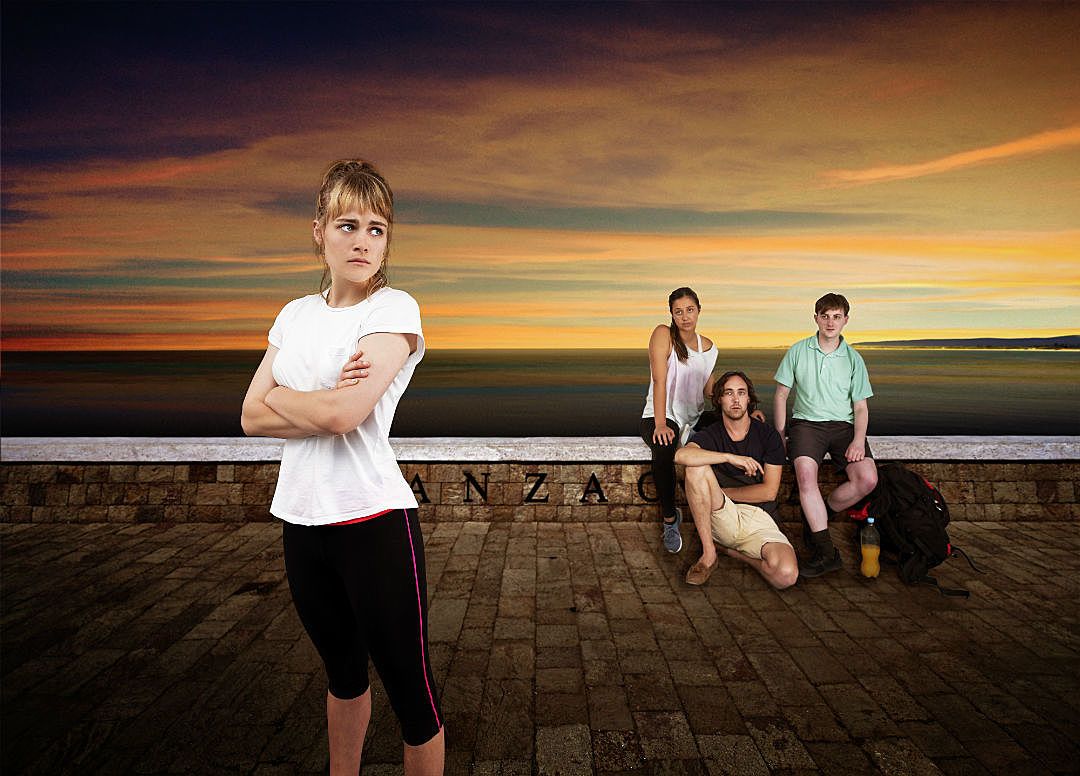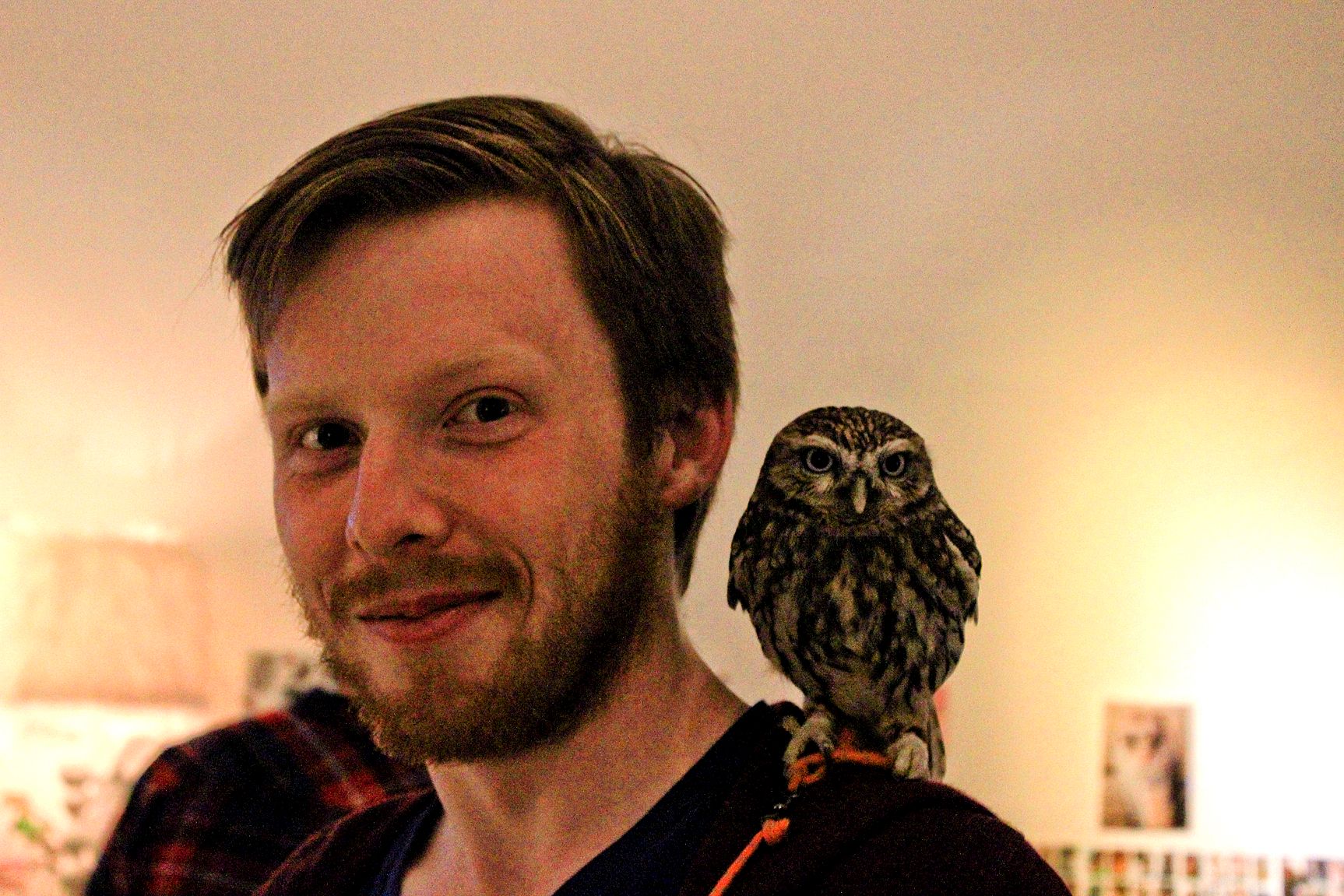Politics of a Battlefield: A Review of Anzac Eve
In Dave Armstrong's Anzac Eve, four millennials sit on top of Anzac Cove, arguing about Anzac Day and the myths that form its foundation. As the show embarks on a New Zealand tour, Adam Goodall tries to figure out what it wants to say.
In Dave Armstrong's Anzac Eve, four millennials sit on top of Anzac Cove, arguing about Anzac Day and the myths that form its foundation. As the show embarks on a New Zealand tour, Adam Goodall tries to figure out what it wants to say.
It’s a weird bit of serendipity that Anzac Eve began its national tour 90 minutes after the release of Nicky Hager and Jon Stephenson’s new book, Hit & Run. Hager and Stephenson’s book is a meticulously-researched account of how the New Zealand SAS planned and carried out a raid on two isolated villages in Baghlan, Afghanistan. The raid was retaliation for the death of a New Zealand lieutenant, intended to take down the insurgents responsible, but they weren’t there. Instead, six civilians were killed and fifteen were wounded.
It’s serendipitous because, in one of Anzac Eve’s more heated moments, bleeding-heart History grad Ben (Barnaby Olson) lets rip about how our troops failed in World War One, how our troops failed in Afghanistan, how our troops fail everywhere they go. Ben lays into the milquetoast nationalists that fate has thrown into his orbit: a redneck IT kid named Phil (Hayden Frost) that Ben vaguely remembers from intermediate, and two Australian women, Maia (Ruby Hansen) and Lizzie (Trae Te Wiki). “Every battle is Chunuk Bair,” he spits, condemning the pointless and avoidable death that’s followed our soldiers through centuries of conflict. Halfway across the city, Hager and Stephenson make his impassioned rant look like an understatement.
That’s part of the problem with Anzac Eve, journeyman playwright Dave Armstrong’s latest play. Armstrong’s working with a simple conceit: four millennials make the pilgrimage to Anzac Cove on the day before Anzac Day proper, bunk down next to each other and start arguing. They argue about the Anzac identity, about the futility of war, about their own identity and the privilege that comes (or doesn’t come) with it, and they argue a lot. Armstrong’s script sets a cracking pace, wordy and stuffed with ideology. Nearly everything that’s said feels like an understatement, though. For all its bark, Anzac Eve has very little bite.
Anzac Eve bears more than a passing similarity to Dead Men’s Wars, Ralph McCubbin-Howell’s 2015 collaboration with Long Cloud Youth Theatre. Like that play, Anzac Eve rolls out two sides of a debate and then smashes them into each other like a destructive kid with a new set of Hot Wheels, seeing what holds under the pressure. Ben, Phil, Maia and Lizzie get stuck into a wide range of subjects: not just Anzac Day – why we fought it, what it stands for, whether it was a cock-up and whether that means anything – but also the refugee crisis, Māori culture, our lads in Afghanistan. Each member of this quartet brings a distinct flavour of nationalism, liberalism and bigotry to the table, and Armstrong foregrounds those flavours in long, uninterrupted arguments that invariably start out good-natured before turning sour.
Armstrong lets these shouting matches stand on their own; unlike Dead Men’s Wars, grand and expressive even on the page, Anzac Eve doesn’t seem all that interested in being a piece of theatre. The four twenty-somethings are seated for most of the show’s running time, lined up at the edge of a camo tarpaulin, penned in by invisible revellers. It’s eminently tourable but horribly static. Director Jamie McCaskill preserves a lot of that vision, barely breaking the line and letting the dialogue run at a breakneck pace even when it’s tiring to follow. Instead, his focus seems to be on the physical life of these characters, their small movements and their sudden, quickly-suppressed explosions. At least, that’s where the production is most interesting.
Anzac Eve rolls out two sides of a debate and then smashes them into each other like a destructive kid with a new set of Hot Wheels, seeing what holds under the pressure.
Armstrong doesn’t give us much information about these characters. They all have one or two beats that define them; the rest is discourse. Olson makes the biggest impression from the jump because of this. In a play dominated by politics, his character Ben’s the only one on the left and so has the biggest point of difference. An exasperated know-it-all leftist who did his MA on Gallipoli, Ben’s nervous when he has to explain the context for his opinions, fidgeting and shifting his weight; he’s more at home arguing, whether he likes it or not, leaning in and focussing all his energy on his opponent as if he’ll lose the moment he looks away.
Frost, Hansen and Te Wiki do funny and compassionate work, especially in each of their ‘Oscar-reel moments’. Their dialogue has a clear formula, though: one of them, usually Phil or Maia, inelegantly expresses their opinion, Ben responds and they go on the defensive. Combined with how little we know or learn about their characters – Lizzie’s family emigrated from Kawerau and Australia’s done its best to remind her that she’s just another brown face; Maia’s a Commerce student with topical secret – Frost, Hansen and Te Wiki are stuck playing one note for long stretches of time. Any shade they bring to their characters (the way Hansen avoids eye contact when conflict starts, the way she and Te Wiki roll their eyes and whisper jokes to each other as the two boys quibble over the details of Chunuk Bair) feels like it’s there despite the script, rather than because of it.
That lack of shade is awkward, but it also brings me back to Dead Men’s Wars. That play wasn’t elegant but it was smart, digging into the many nuances of the debate around Anzac Day and why its characters believed what they believed. In Anzac Eve, the arguments exist for the sake of argument, summing up both sides of a debate already happening in public and refusing to make any strong statements either way.
Take one scene early on. Ben and Maia have it out over Australia’s handling of the refugee crisis, and Maia inadvertently lets slip that her main concern is the millions of “Asians” who might be waiting to come over in rickety boats once they hear Australia’s a soft touch. Ben pushes the point, but when Maia shouts that he can afford to be self-righteous because he ‘doesn’t have to live with it’, Ben uncharacteristically shuts down. The subject is only raised once more, when Lizzie has to defend Maia again; Armstrong otherwise lets it lie, like a lot of topics, trucking on to the next point of disagreement. We don’t need Maia to easily convert to the left; we do need a sense that this isn’t disposable, that Armstrong’s offering us something beyond an accurate representation of how people today are discussing the refugee crisis – or immigration, or Māori identity, or war, or what the Anzac spirit even is.
Anzac Eve does offer us something. It reminds us that there’s a person and a life behind every ideology, and that’s fine. It’s always worth remembering that the person we’re in an argument with may have experiences and anxieties that fuel the way they think, that it’s not as easy as swaying them with figures and analysis. It’s not enough, though, for a sixty minute play that deals with these topics to just be a reminder, a post-it on the fridge. It needs to offer us something stronger, something that persuades us to consider these subjects, these people, this world in an unexpected or compassionate way. Anzac Eve bails out before it can.
Anzac Eve runs at
BATS Theatre, Wellington
from Thursday 21 March to Saturday 25 March
Gallagher Academy of Performing Arts, Hamilton
from Tuesday 28 March to Wednesday 29 March
Herald Theatre, Aotea Centre, Auckland
from Friday 31 March to Wednesday 5 April
And numerous other dates around the country between Friday 7 April and Saturday 6 May.
For tickets to and more information about Anzac Eve, go here.

